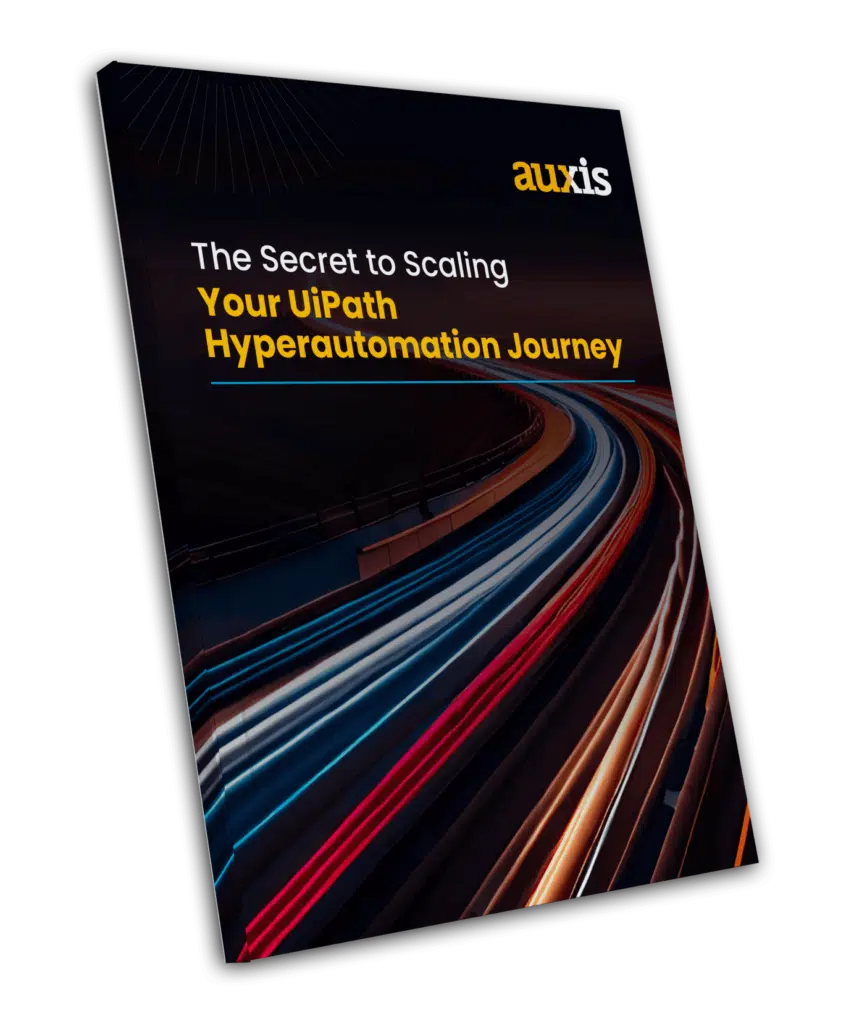As 2021 sets, it’s hard to find an enterprise that hasn’t joined – or started to explore – the journey to hyperautomation. But despite the challenges many companies have experienced, hyperautomation isn’t difficult – if you follow a clear and detailed roadmap of RPA implementation best practices.
Demand for Robotic Process Automation (RPA) has reached record territory, driven by fast-tracked digitization after COVID and the desire to control costs while freeing human staff for higher-value initiatives. Valued at $1.57 billion in 2020, the RPA market is expected to reach nearly $14 billion by 2028 with a 33% CAGR.
Gartner predicts RPA adoption across 90% of large organizations worldwide by 2022 – and Deloitte expects universal adoption the next year. The UiPath platform stands out as the go-to solution, with a significantly greater customer base than other vendors and revenue that’s jumped a whopping 81% over the last fiscal year.
You’d be hard-pressed to find another transformation that can achieve the same quick benefits as RPA – when it’s implemented effectively. But despite RPA’s promise, it’s no secret that 65% of initiatives stall at 10 or fewer processes.
Let’s examine 5 RPA implementation best practices that can take your organization beyond Proof of Concept to company-wide hyperautomation.
RPA implementation best practices help you avoid common challenges
1. Start with the end goal in mind.
An automation journey is about results. Having a clear vision from the start is vital to growing your RPA program successfully.
Consider these key questions:
- What are you trying to achieve by implementing RPA?
- What tools and investment do you need to get there?
- What does your automation roadmap look like at a high level?
Cost savings are important, but RPA also offers more. In their rush to solve today’s problems, most organizations don’t stop to consider long-term benefits.
Take time to identify your key business drivers for automation and how they align with corporate strategy. Whether the end goal is saving money, quality control, revenue enablement, real-time reporting to achieve one version of the truth, or another business driver, crystallizing a clear vision up front focuses your RPA journey and builds the most effective business case.
While course adjustments may be made along the way, knowing your endgame helps you plot a high-level roadmap for how to get there. It makes it easier to determine automation priorities, high-value business areas, the best process candidates, and the right combination of tools to bolster success.
2. Understand the long-term operating model and governance structure needed to achieve your RPA vision.
An outstanding RPA Center of Excellence (CoE) is essential to a sustainable journey – responsible for designing, developing, and maintaining your company’s process robots. Here are five key considerations for building your CoE operating model:
- What service catalog should your CoE provide? The best catalogs are tailored to your RPA vision, incorporating critical roles like automation governance, idea generation, skill development, process assessment, and change management.
- Should you outsource your CoE, keep it in-house, or opt for a hybrid solution? While internal teams may appear less costly than hiring a third-party provider, this approach works best for large global organizations with deep pockets and sizable workforces. The severe IT labor shortage in the U.S. also makes hiring RPA staff a costly headache. Most companies find that a hybrid approach leveraging the resources, knowledge, and experience of a reputable partner with the business expertise of in-house staff delivers the best outcome.
- Why are centralized governance and business process design critical to successful RPA? Without strategic oversight, a tangled mess of isolated RPA projects can develop: robots targeted at the wrong tasks, overlapping solutions, and a random mix of tools and techniques that hinder future scaling. Tapping business analysis experts that know how to optimize processes and anticipate exceptions during the design phase is also key to ensuring robots achieve desired productivity and efficiency.
- Why do most enterprises underestimate the cost of internal teams? Most organizations find out the hard way that internal CoEs can spiral into budget overruns after experiencing the number of hours required for training, recruiting, support, and maintenance. Internal CoEs also require a substantial pipeline of projects to drive ROI.
- What’s the role of IT? While RPA projects are business-driven, IT support is essential to a sustainable program. IT brings advanced technical knowledge of existing infrastructure, testing and maintenance capabilities, data security oversight, and more. Onboarding IT early in the journey helps tech teams visualize the role RPA can play in attaining company goals – ensuring automation scalability becomes part of IT strategy.
3. Don’t start a pilot program without the right talent.
Get your pilot right and it’s a showcase success: building credibility, delivering metrics that support a larger business case, and shattering employee resistance with a first-hand look at how RPA can improve their work lives.
But rushing into a pilot without the right talent can ensure your automation journey never gets off the ground. Inexperienced or incomplete teams rarely deliver the quick, clean win you need to quell skepticism and fuel excitement.
Successful pilots stem from a cross-functional team that can ensure solutions are built, deployed, improved, and evangelized correctly. With so much at stake, more than 60% of businesses rely on RPA partners, realizing the critical need for skills they don’t possess to drive their automation initiatives, Deloitte states.
Choosing a UiPath partner with a proven track record, strong references, business expertise, a deep bench, and a solid plan for creating a continuous talent pipeline sets you on the path toward success.
4. Ensure long-term value with a separate support team.
Robots are never a “set it and forget it” investment, inevitably requiring some tweaking to adapt to new process exceptions. Yet most companies neglect to create a separate support structure, wrongly assuming developers can maintain the bots.
Here’s the reality: Ongoing maintenance and support require a different set of skills than design and implementation. Organizations also underestimate the support required to ensure a smooth UiPath program, distracting developers from higher-value innovation. Turnover tends to increase as well when developers are forced to perform monotonous support tasks.
Bots that stay broken too long harm ROI and organizational buy-in. A solid support structure that can guarantee the continuous operation of your bots is key to long-term automation value.
Many organizations find that leveraging RPA providers is the best way to provide support. That way, they can safeguard their investment and optimize ROI without carrying a pricey in-house team without a consistent pipeline of work.

5. Control scope creep.
When it comes to automation opportunities, the sky’s the limit. So, managing a project’s scope becomes a balance between investment and return.
For instance, automating an Accounts Payable (AP) process to include the 80 vendors who represent 70% of your invoices delivers the right ROI. Expanding the project to automate the process for every vendor – including those who only send a single invoice per year – doesn’t make financial sense.
However, RPA providers paid on a “time and materials” basis can be incentivized to stretch timelines by continuously expanding projects. In contrast, choosing an RPA partner with a transparent risk-sharing model helps companies control costs by establishing the price tag upfront.
These providers ensure companies derive the most value from their automation, driving stakeholder support. They are also incentivized to deliver a quality product on time because they eat the margin if they don’t.
RPA implementation best practices: the secret to scaling RPA successfully
Gartner ranked hyperautomation as a top 9 “technology trend IT can’t afford to ignore” for 2021. And there’s no sign of the buzz abating.
But achieving hyperautomation remains easier said than done. Deloitte reports that only 3% of organizations that started a journey have managed to achieve any form of scale.
Following these 5 RPA implementation best practices can keep you firmly planted on the road to success – and unlock the benefits of hyperautomation across your enterprise.
Want more tips for launching a successful UiPath hyperautomation journey from a top-rated UiPath Gold Partner? Download our white paper, “The Secret to Scaling Your UiPath Hyperautomation Journey: Learn What You Are Doing Wrong – And How to Get it Right!”
